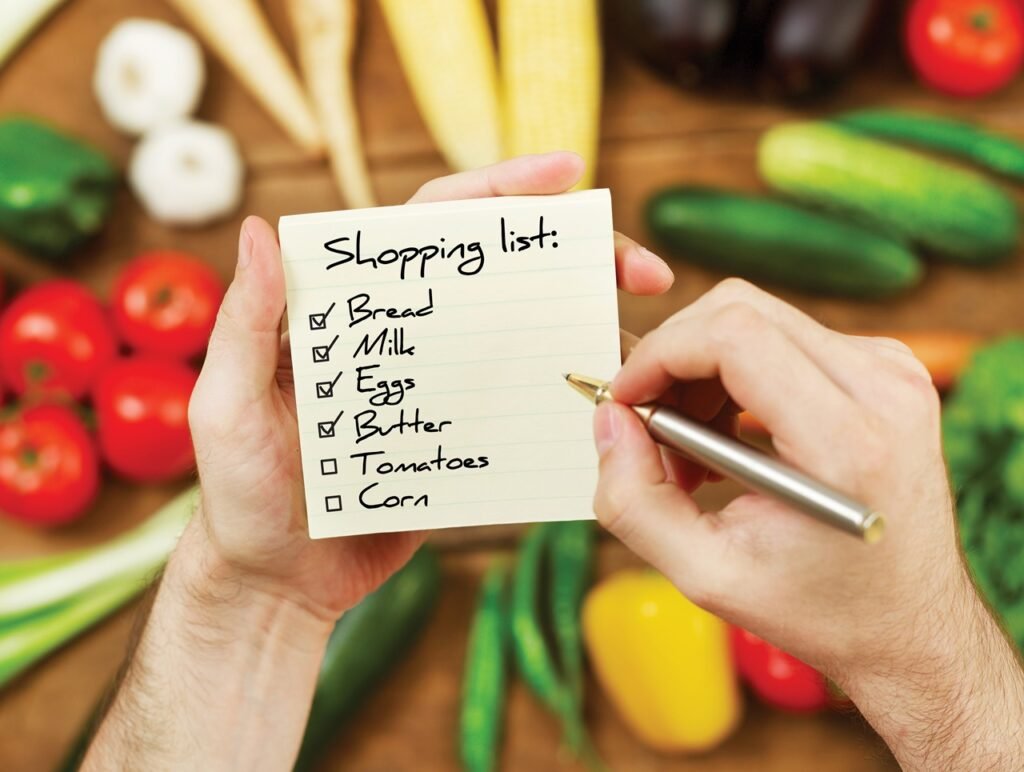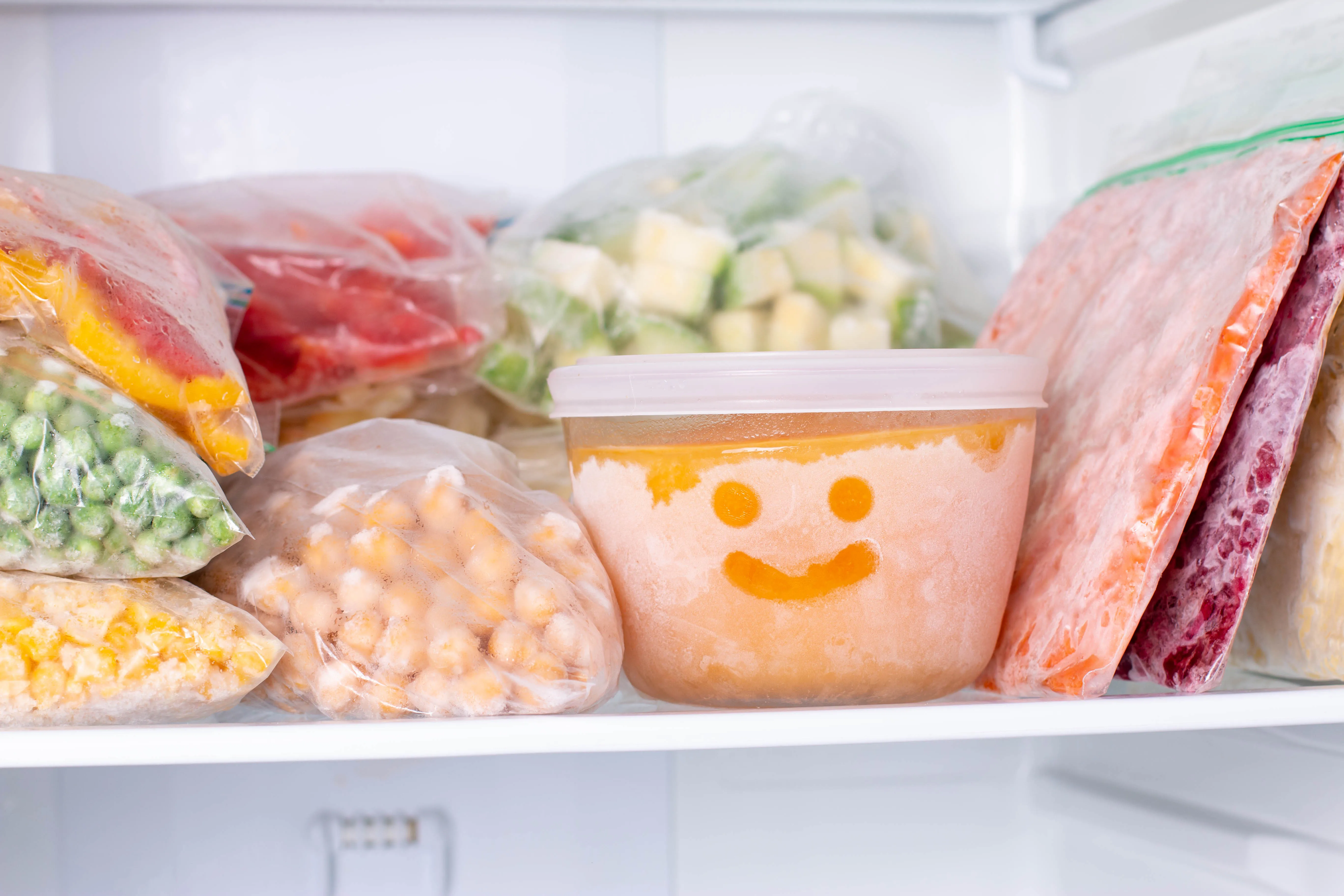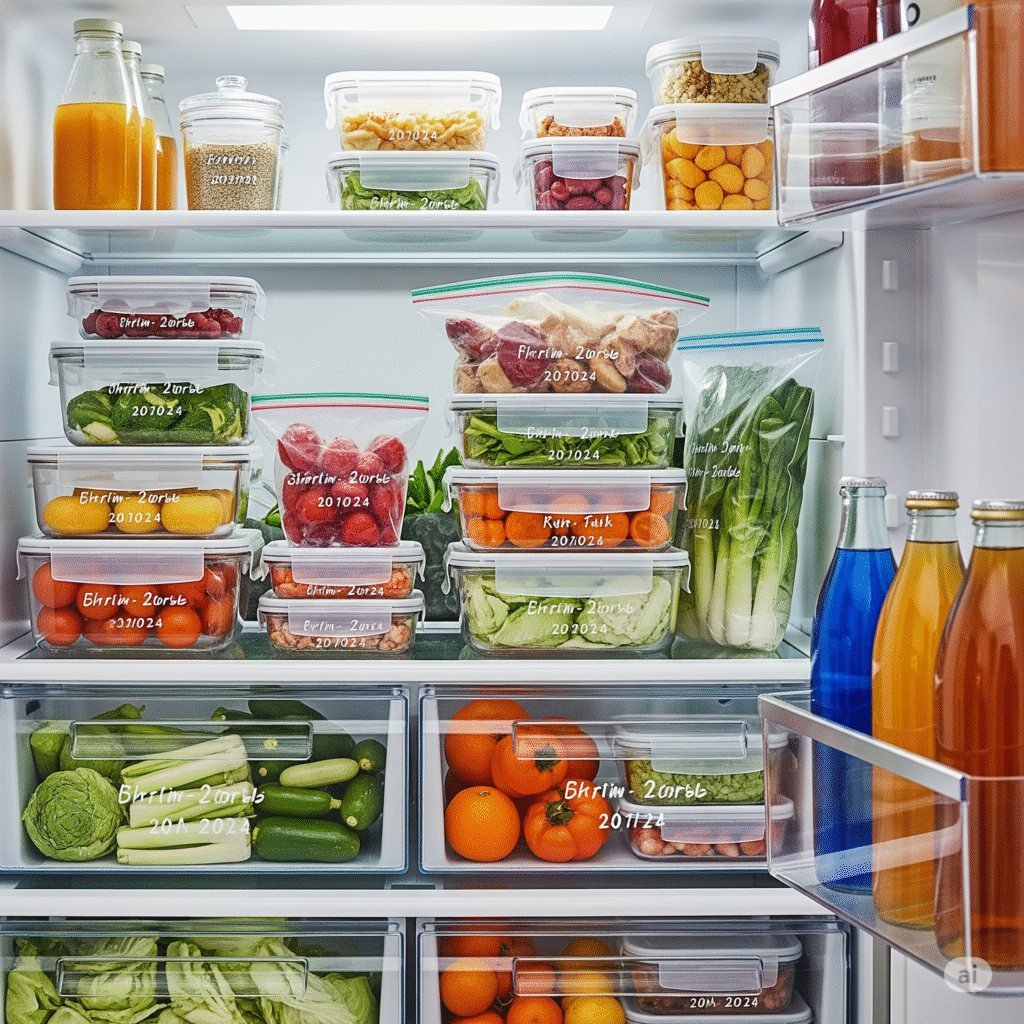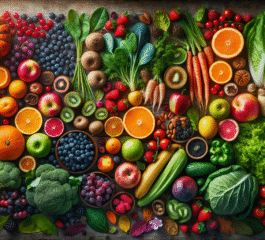- Financial Savings: Buying items on sale, in bulk (when appropriate), or with coupons significantly reduces your overall food bill. This is a core budget-friendly strategy.
- Convenience: Fewer trips to the supermarket mean saving time, gas, and energy – especially valuable if mobility is a concern. With a well-stocked pantry, a quick meal is always within reach.
- Reduced Food Waste: Intelligent stocking involves proper storage and meal planning, which directly combats food waste. You buy what you need, use what you buy, and nothing gets forgotten in the back of the fridge.
- Emergency Preparedness: While not the primary goal, a sensible stockpile provides a buffer during unexpected events, like bad weather or illness.
- Healthy Eating: When you plan and stock up on nutritious items, you’re less likely to resort to expensive takeout or less healthy convenience foods.
Essential Smart Grocery Shopping Tips: Your Strategy

making shopping list
Mastering grocery shopping to build a smart stockpile involves more than just grabbing a cart. It requires a strategic approach:
Plan Your Meals (and Your Stockpile):
- This is the cornerstone. Before you even think about the store, plan your meals for the week (or even two weeks). Consider what you already have.
- Meal planning helps you create a targeted shopping list, preventing impulse buys and ensuring every purchase serves a purpose. It directly influences how you buy in bulk. You might even find some useful tools for meal planning on a budget online.
- Pro Tip: For seniors, focus on simple, nutritious recipes that use versatile ingredients.
Master the Art of the Sale: 

- Know Your Prices: Pay attention to regular prices vs. sale prices. A “sale” isn’t always a deal.
- Circulars & Apps: Browse weekly store circulars (online or physical) and use supermarket apps to identify the best promotions. Many stores offer digital coupons exclusive to app users.
- Couponing for Food: Look for digital and printable coupons. Combine these with sale items for maximum savings. Start with coupons for items you already use. Don’t buy something just because you have a coupon for it.
Buy in Bulk (Wisely):
- Non-Perishables First: Items like canned goods (beans, tomatoes, tuna), pasta, rice, dry beans, oats, and cooking oils are perfect for bulk buying when on sale.
- Freezer-Friendly Items: Meat, poultry, fish, and even some vegetables (blanched first) can be bought in larger quantities when discounted and frozen for later use. Ensure you have adequate freezer space.
- Assess Usage: Only buy in bulk what you know you’ll use before it expires. A good deal isn’t good if it ends up in the trash. This directly impacts food waste.
Explore Different Shopping Avenues:
- Farmers Markets: Can offer great deals on seasonal produce, sometimes even “ugly” fruits/veg at a discount, perfect for immediate use or preserving.
- Discount Stores: Stores like Aldi or Lidl often have lower everyday prices on staples.
- Warehouse Clubs: Places like Costco or Sam’s Club can be great for bulk non-perishables, but calculate the cost per unit to ensure real savings.
- Online and Delivery Supermarket Services: Many supermarkets now offer online ordering with pick-up or home delivery. This can save you time and impulse buys, though delivery fees apply. Factor these into your budget.
For more in-depth resources on managing your food budget as an older adult, explore valuable guides like Healthy Eating on a Budget for Older Adults from Colorado State University Extension.
Smart Storage: Keeping Your Stockpile Fresh & Waste-Free



Having a stockpile is only half the battle; proper storage is key to preventing food waste.
- First In, First Out (FIFO): Use older items before newer ones. Label items with purchase dates to help manage this.
- Pantry Organization: Keep your pantry organized. Clear containers, labels, and shelves make it easy to see what you have, preventing forgotten items. This aligns well with general organize kitchen pantry tips.
- Proper Food Preservation:
- Freezing: Learn how to properly freeze meats, bread, vegetables (blanching required for most veggies), and even cooked meals. Use freezer-safe bags or containers to prevent freezer burn.
- Canning/Jarring: For the more adventurous, canning can preserve seasonal fruits and vegetables for long periods.
- Drying/Dehydrating: Great for herbs, some fruits, and vegetables.
- Understand “Best By” Dates: “Best By” or “Sell By” dates indicate quality, not safety. Many foods are perfectly fine to eat after these dates, especially if stored properly. Use your senses (smell, sight) to determine freshness.
Combating Food Waste: The Ultimate Saver
Minimizing food waste is a huge component of smart grocery shopping tips and stockpile management.
- “Eat Me First” Bin: Designate a spot in your fridge for items that need to be eaten soon.
- Creative Leftovers: Transform leftovers into new meals. Extra roasted chicken can become a salad or soup.
- Scraps for Broth: Keep vegetable scraps (onion peels, carrot tops, celery ends) in a bag in the freezer to make homemade vegetable broth later. This aligns perfectly with the sustainable cooking aspect of a kitchen garden!
- Portion Control: Cook only what you need to avoid excess leftovers that might go bad.
Conclusion: Your Smart Stockpile, Your Senior Savings
Building a smart food stockpile isn’t about hoarding; it’s about strategic grocery shopping that empowers you to eat well, save money, and live with more convenience and less stress. By implementing these smart grocery shopping tips, mastering meal planning, and committing to reducing food waste, you’ll transform your kitchen into an organized, efficient hub of fresh, affordable meals. Embrace the power of intelligent stocking, and enjoy the delicious dividends of your efforts!
Frequently Asked Questions (FAQ)
Q1: What’s the ideal size for a senior food stockpile? A1: An ideal stockpile supports 2-4 weeks of meals. It’s about having essentials and commonly used items on hand, not about filling every inch of space.
Q2: Are online delivery supermarket services worth the extra fee for seniors? A2: For many seniors, yes. The convenience of not traveling, carrying heavy bags, and avoiding impulse buys can outweigh the delivery fee, especially if you plan your order strategically to maximize savings from sales.
Q3: How often should I review my stockpile? A3: A quick review every 1-2 weeks is ideal, especially before you do your main grocery shopping. This helps you use up older items and update your shopping list.
Q4: Can I really save money by couponing for food? A4: Absolutely! When combined with sales, coupons can lead to significant savings, especially on branded products. Many digital coupons load directly to your store loyalty card, making it even easier.
Q5: What are the biggest contributors to food waste in a senior household? A5: Common culprits include buying too much perishable food, not knowing what’s already in the pantry/fridge, and not planning meals around what’s available.
Q6: What if I don’t have much pantry space for a stockpile? A6: Even small spaces can be optimized. Consider vertical storage, clear containers, and focusing on a smaller, rotating stockpile. Prioritize shelf-stable items and learn proper freezing techniques.
Read also : The key to a smart pantry starts with the right choice. Learn how to spot the best deals and fresh produce with our guide on Seasonal Fruit and Vegetables: A Senior’s Guide to Saving Money and Eating Healthy.






